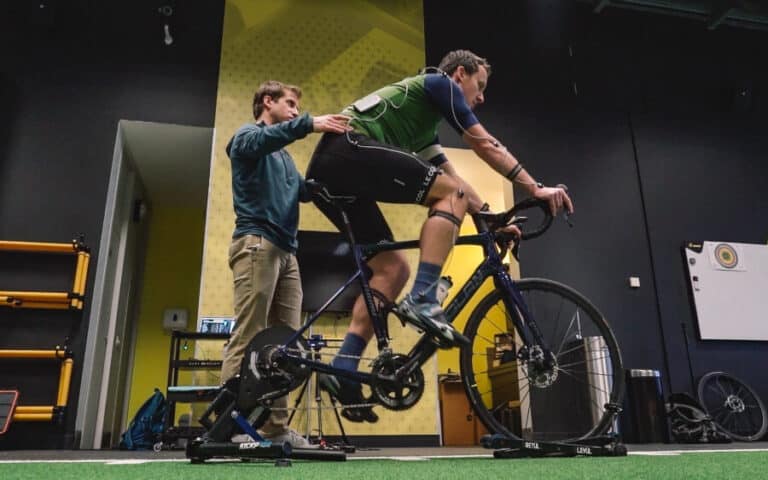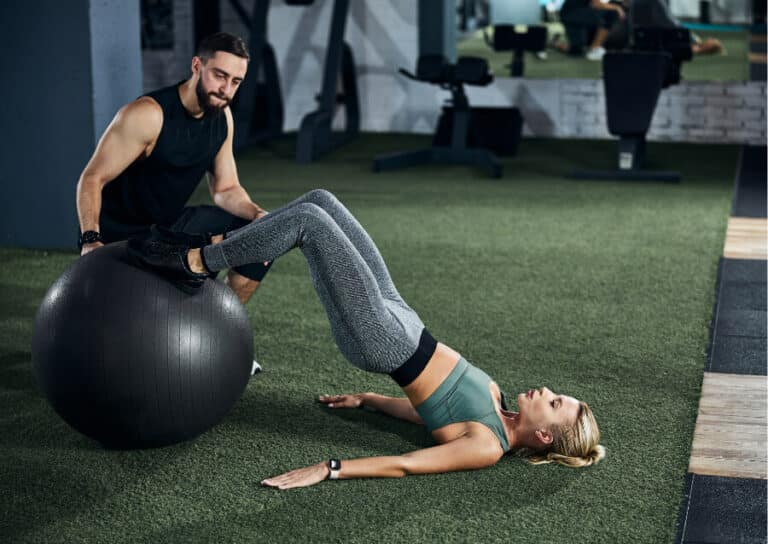I have been pitch side the moment of Adductor Longus, Achilles Tendon, Proximal and Distal Hamstring, Rectus Femoris, Biceps (Brachii) and Plantar Fascia ruptures (not a tendon as such but similar in its force absorbing properties at the moment of injury) and have also witnessed Patella Tendon ruptures after the event.
Recognising these injuries is often as much about recognising the shock that the person experiences in the immediate aftermath of the mechanism as it is about carrying out a physical assessment which will tell the story.
The language used by the athlete is fairly graphic in directing your diagnosis towards a rupture, with descriptives such as “exploded, collapsed, shot and stabbed” being amongst those commonly used.
Repair or not repair? That is the question
In this blog, we will focus on complete adductor avulsions. In particular, the key decision(s?) around whether to repair or manage conservatively, some personal thoughts on the pros and cons around both decisions and some of the issues you may face along the way.
In the past, I have been a strong advocate for restoring the anatomy following complete muscle and tendon ruptures and in some cases, it’s a fairly open and closed case that a repair is required to enable a full return to sporting activity.
However, with Adductor Longus avulsion injuries the decision isn’t quite as clear cut. And there are a number of published and anecdotal cases which have shown that a full return to previous levels of function is possible without the need for surgery.
For obvious reasons this blog will focus on the adult male footballer demographic but I acknowledge that trying to extrapolate the advice provided here to younger athletes or indeed female footballers or men or women playing different sports may not be appropriate.
Why the adductor longus?
The adductor longus is a key muscle in any athlete taking part in change of direction or kicking sports. In fact, Adductor injuries are considered one of the four most commonly seen injuries within football – with Rectus Femoris, Hamstring and Calf injuries making up the rest of the group – and it isn’t hard to work out why these muscles come under considerable demand.
The Adductor muscle group works within a larger system to provide stability around the pelvis. In kicking, maximum activation and rate of stretch of the adductor longus occurs immediately prior to the peak hip extension of the kicking leg (Charnock et al., 2009). This is amplified by a combined external rotation position (Charnock et al., 2009), which is the position of a ball-striking action. This implies that the Adductor Longus (AL) works eccentrically and is likely to be most at risk of incurring injury in this phase. Interestingly, AL injury accounts for 92% of acute muscular groin injuries in footballers (Serner et al., 2018), so suspicion should be high with an onset of acute adductor muscle pain.
Clearly, the role of the AL within the complex movement demands of football (soccer) is multifactorial!
As one of a number of structures which make up an “athletes groin” its length and power developing properties put it at risk of injury. The majority of those injuries occur at the musculotendinous junction (MTJ) and would be considered under the normal classification of muscle injury (such as BAMIC).
See previous blog on imaging criteria for more information.
https://rehab4performance.com/treat-the-person-not-the-scan/
Back to this one
In this blog we will focus on injuries which occur at the adductor origin which would be considered avulsion injuries in the region of the tendon / fibrocartilage plate and footprint.
But hang on, if it’s off the bone just stick it back on…right?
Not always. When deciding whether a surgical repair is needed I think it’s important to determine why the injury occurred in the first place as well as the age and physical profile of the player.
For example, did the injury occur because of weakness? Were they a known relatively “weak ADductor versus strong ABductor” athlete with prior concerns over Ab/Ad ratios?
Was it an acute overload due to mechanical demands (ie repeated shooting actions on background of fatigue)?
Did it occur because the athlete was overloading the area (ie strong adductors on testing but overload of the bony attachment over a period of time)?
Is it on a background of “Athletic groin pain” and have they had other interventions in the area to address ongoing symptoms such as inguinal repairs? In other words, has it been coming so to speak and the adductor rupturing was in effect a relieving of the pressure (a bit like the more chronic changes and secondary clefts seen at the adductor insertion in footballers).
Regardless, the athlete will always require a surgical review, during which the surgeon can draw upon large caseloads of historic data when determining the impact of repair on factors such as future strength/reinjury and performance.
But what the surgeon won’t have is the same in-depth understanding of the athlete prior to injury. In other words, how the athlete arrived at the moment of avulsion and whether the anatomy needs to be restored or can be managed conservatively. Factors like the player’s age, performance expectations, position and contract situation also need to be included in the discussion.
Types of adductor avulsion
This excellent recent paper by one of the outstanding voices in the world of groin surgery Ernest Schilders gives more descriptions of the multitude of adductor avulsion injuries.
https://link.springer.com/article/10.1007/s00167-020-06180-5
The purpose of the study is to review the MRI findings in a cohort of athletes who sustained acute traumatic avulsions of the adductor longus fibrocartilaginous entheses, and to investigate related injuries namely the pyramidalis–anterior pubic ligament–adductor longus complex (PLAC)
There were 132 athletes (91.0%) with a complete adductor longus fibrocartilage avulsion and 13 (9.0%) with a partial avulsion. In 55 athletes, the pyramidalis was still connected to the adductor longus; in seven, there was a partial separation; in 81 athletes, the pyramidalis was disconnected from the adductor longus. 48 athletes with PLAC injuries had an associated partial avulsion of the pectineus and inguinal ligament injury.
85 of the 145 subjects played professionally and the mean age at the time of rupture was 32.
Is age a factor?
The mean age of the subjects would make them fairly old in terms of professional sporting populations adding weight to the idea that the injury is of an acute on chronic nature with eventual rupture after years of micro trauma.
Anecdotally the true acute mechanism based injuries have tended to occur in younger players.
Take particular note of players describing “bone pain” in the region of the AL origin even if this doesn’t marry up with bony changes on imaging (which may be latent) or tendon changes typical of entheseopathy.
The descriptive and pinpoint location of the pain can be something of the canary in the mineshaft for subsequent rupture.
Surgery, yes or no?
Surgery results in successful outcomes with these injuries. They typically return to full activity at around 3-4 months and there are signs that restoration of the anatomy clears the adductor region from the previous chronic complaints.
But surgery does bring risks. This is a high risk area for infection and they happen.
Suture reactions whereby the wound is resistant to healing due to a non-infected discharge are also possible.
Any wound issues at past 6 weeks since surgery which don’t show signs of healing despite no infection should strongly consider removal of the anchor sutures (they will have done their job by then).
Non-surgical approach
There have been a number of studies which have looked exclusively at adductor ruptures and included high grade conservatively managed injuries, such as this one by Serner and colleagues
https://www.ncbi.nlm.nih.gov/pmc/articles/PMC6990618/#!po=2.38095
They report a return to sport in approx 3 months when following a graded rehabilitation program.
Other studies focusing specifically on adductor longus ruptures and conservative rehab (in other sports) have also been published.
https://journals.sagepub.com/doi/abs/10.1177/0363546509332501
Anecdotally the rehab is often described as being a little more precarious in that as the injured tissues scar down to create in effect a new attachment there will be moments along the way of the athlete feeling like they have reinjured as the healing structures are challenged to encourage effective remodelling.
It appears this is the new tissue finding its new normal and tends to occur as quicker and more powerful demands are placed upon it (ie full striking and whipping of a ball is a huge psychological bridge for the athlete to cross).
Conservative rehabilitation also results in successful outcomes in these players.
So the question is how can we subgroup them prior to making the surgical decision to help us know which need to go down those respective paths.
At the moment we probably can’t and so instead are making educated decisions guided by specialists / colleagues / previous experience and the athlete themselves.
Surgery and Conservative – they are more alike than you think
Whether surgery has been carried out or not, the rehabilitation principles remain the same.
The aim of this blog isn’t to go into detail about the specifics of those processes but what is clear is that a graduated loading and lengthening of the recovering tissue to restore strength and elasticity is key to a return to normal activity.
Underpinning these progressions with sound objective strength / power and performance data will guide the exposure of the tissue to more explosive demands.
This should happen when the recovering tissue can demonstrate strength capacity to cope with the next step in the rehabilitation pathway rather than by pre-determined guidelines.
Eccentric strength
It seems that applying rapid force in a lengthened position is commonly involved in AL injury mechanisms, either in an open-chain (propelling the shank/foot) or a closed-chain (propelling the trunk) mechanism (Serner et al., 2019). For this reason, rehabilitation progresses to include heavy eccentric strength loads during gym sessions. The player should also have full exposure to the force-velocity curve, including high-velocity exercises that aim to develop the stretch-shortening cycle of the muscle-tendon unit. To this end, the adductor longus rehab pathway should look similar to that of a hamstring, prioritising eccentric training with load and velocity-based progressions, while also ensuring to progressively challenge the pelvis and trunk in multi-plane movements.
Lumbo-pelvic focus
Footballers have been found to have an add:abd ratio of 1:05 (Thorborg et al., 2010). This is indicative of the adductor and abductor co-contraction that occurs at the pelvis between these two muscle groups. Therefore, an emphasis is placed on lumbo-pelvic stability and strength, which also recognises the importance of the trunk and abdominal musculature. As such, importance is given to optimal trunk and lumbo-pelvic control in all movement control and core sessions.
In summary
Like lots of areas in sports medicine deciding to do surgery on adductor avulsions isn’t an open and closed case.
The evidence behind each approach will be evolving all the time as will your own experiences of going down each path.
A return to play when managed conservatively could be achieved in 8-12 weeks. A return to full activity after Surgery can be achieved at 10 weeks but is more likely to be between 12-16 weeks.
This overlap in prognosis adds to the complexity of the decision making.
The promises made by surgeons around returning full power and function with less risk of reinjury are compelling but any surgical intervention carries risk and this should be weighed up against the varying time scales.
Which ever path is taken you will probably have moments of wishing you had taken the other one whilst forgetting that any rehabilitation isn’t a smooth line of progressive improvement.
What is vital is that we consider the person in front of us as more than an individual piece of injured tissue and whichever path we take is done so with a holistic rehabilitation process built on the principles of returning them back to the demands of their sporting task.
If we do that we won’t go far wrong.
So if you called me up now and asked me to advise surgery or not…the truth is I still couldn’t tell you definitively but we could have a great chat going backwards and forwards with the pros and cons.
Hope that was helpful though!!
CMo












